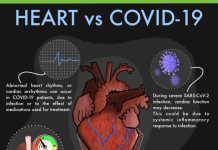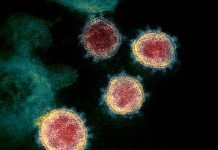A recent study has estimated disease frequency of herpes simplex virus (HSV) infections and genital ulcer disease (GUD). The estimates suggest that about 846 million people aged 15–49 years were living with genital herpes infections in 2020, which is more than 20% of the people in this age group globally. For comparison, total number of people with genital herpes infection in 2016 was about half a billion. High rates of incidence and prevalence and annual growth in the recent years calls for more effective preventive measures. Currently, there are no licensed HSV vaccine. There are several HSV vaccine candidates in the pipeline however all are in preclinical state, yet to enter the phase 1 of human clinical trial.
Herpes simplex virus (HSV) is a double-stranded DNA virus belonging to herpesviridae family. It binds to host cellular receptors and replicate in various tissues such as epithelial cells, neurons, etc. It causes common infection which is asymptomatic most of the times but may cause painful blisters or ulcers. The infection spread through skin-to-skin contact.
The HSV infection is life-long, it is treatable but not curable.
HSV has two types. HSV-1 mainly causes oral herpes and spreads through oral contact, however it may be involved also in genital infection and be transmitted sexually.
HSV-2 causes genital herpes and spreads through sexual contact. The genital ulcer disease (GUD) is associated with both HSV-2 and HSV-1.
People affected by HSV infection, particularly HSV-2 are at higher risk of acquiring human immunodeficiency virus (HIV).
Herpes simplex virus infection is known to have affected large number of people worldwide. In 2016, a study estimated number of such people. It was found that about half a billion people had genital infection attributed to HSV-2 and HSV-1 while several billion people were affected with oral infection due to HSV-1. Further, millions of affected people were at risk of acquiring human immunodeficiency virus (HIV).
A recent study published on 10 December 2024 has shed light on the extent of this problem. Using a calibrated mathematical model and model inputs from systematic review and meta-analyses of HSV prevalence data for all WHO regions, the study generated estimates of incidence and prevalence of genital HSV infections worldwide in 2020 in 15–49 years age group, genital ulcer disease (GUD) caused by both HSV types and non-genital infections caused by HSV-1.
Table: Disease frequency of genital HSV infections in 2020 in 15–49 years age group.
| Number of people aged 15–49 years affected by genital HSV infections worldwide in the year 2020 |
| Genital HSV infections due to HSV-2: →25.6 million new cases (incidence), →519.5 million (or 13.3%) total existing cases (prevalence) →187.9 million with at least one episode of HSV-attributable Genital ulcer disease (GUD) for HSV-2 |
| Genital HSV infections due to HSV-1: →16.8 million new cases (incidence) →376.2 million (or 10.2%) total existing cases (prevalence) →16.7 million with at least one episode of HSV-attributable Genital ulcer disease (GUD) for HSV-2 |
| →846 million is total number of people aged 15–49 years living with genital herpes infections (prevalence of HSV-2 plus prevalence of HSV-1). This is more than 20% of the people in this age group globally. →204.6 million is total number of people aged 15–49 years with at least one episode of HSV-attributable GUD →About 42 million people acquire new genital herpes infections annually. |
| (Source: Harfouche M., et al 2024) |
As per the recent study, a total of 846 million people aged 15–49 years were living with genital herpes infections (due to HSV-2 and HSV-1) in the year 2020. For comparison, in 2016, about half a billion people (in all age group) had genital herpes infection.
Clearly, genital HSV infections have very high incidence and prevalence rates. In 2020, more than 20% of the people in 15-49 years age group globally had genital herpes infection. Worryingly, the numbers have increased at a fast pace in the recent years.
The situation calls for more effective preventive and therapeutics measures. Currently, there are no licensed HSV vaccine. There are several HSV vaccine candidates in the pipeline however all are in preclinical state, yet to enter the phase 1 of human clinical trial.
***
References:
- WHO. Fact sheet – Herpes simplex virus. 10 December 2024. Available at https://www.who.int/news-room/fact-sheets/detail/herpes-simplex-virus
- James, Charlotte et al. “Herpes simplex virus: global infection prevalence and incidence estimates, 2016.” Bulletin of the World Health Organization vol. 98,5 (2020): 315-329. Available at https://pmc.ncbi.nlm.nih.gov/articles/PMC7265941/
- Harfouche M., et al 2024. Estimated global and regional incidence and prevalence of herpes simplex virus infections and genital ulcer disease in 2020: mathematical modelling analyses. Sexually Transmitted Infections, BMJ Journals. Published Online First: 10 December 2024. DOI: https://doi.org/10.1136/sextrans-2024-056307
- WHO news- Over 1 in 5 adults worldwide has a genital herpes infection – WHO. Posted 11 December 2024. Available at https://www.who.int/news/item/11-12-2024-over-1-in-5-adults-worldwide-has-a-genital-herpes-infection-who
- WHO. Immunization, Vaccines and Biologicals – Herpes Simplex Virus. Available at https://www.who.int/teams/immunization-vaccines-and-biologicals/diseases/herpes-simplex-virus
***



































